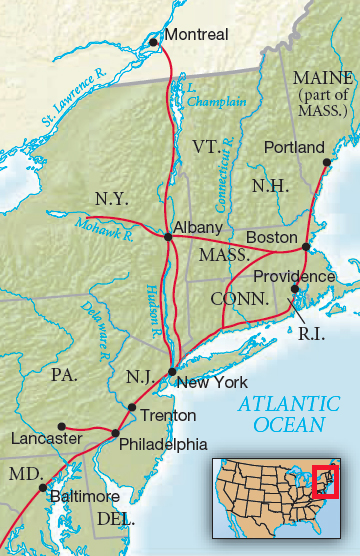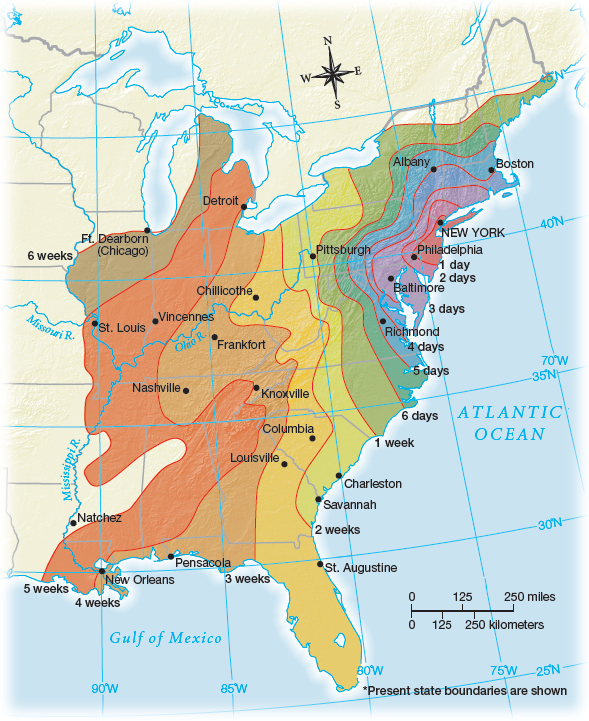Agriculture, Transportation, and Banking
Printed Page 240
Dramatic increases in international grain prices, caused by underproduction in war-stricken Europe, motivated American farmers to boost agricultural production for the export trade. From the Connecticut River valley to the Chesapeake, farmers planted more wheat, generating new jobs for millers, coopers, dockworkers, and shipbuilders.

Cotton production also boomed, spurred by market demand from British textile manufacturers and a mechanical invention. Limited amounts of smooth-seed cotton had long been grown in the coastal areas of the South, but this variety of cotton did not thrive in the drier inland regions. Greenseed cotton grew well inland, but its rough seeds stuck to the cotton fibers and were labor-intensive to remove. In 1793, Yale graduate Eli Whitney devised a machine called a gin that easily separated out the seeds; cotton production soared.
A surge of road building further stimulated the economy. Before 1790, one road connected Maine to Georgia, but with the establishment of the U.S. Post Office in 1792, road mileage increased sixfold. Private companies also built toll roads, such as the Lancaster Turnpike west of Philadelphia, the Boston-to-Albany turnpike, and a third road from Virginia to Tennessee. By 1800, a dense network of dirt, gravel, and plank roadways connected towns in southern New England and the Middle Atlantic states, spurring the establishment of commercial stage companies. A trip from New York to Boston took four days; from New York to Philadelphia, less than two (Map 9.1). In 1790, Boston had only three stagecoach companies; by 1800, there were twenty-four.
CHAPTER LOCATOR
What were the sources of political stability in the 1790s?
What were Hamilton’s economic policies?
What external threats did the United States face in the 1790s?
How did partisan rivalries shape the politics of the late 1790s?
Conclusion: Why did the new nation ultimately form political parties?
 LearningCurve
LearningCurve
Check what you know.

A third development signaling economic resurgence was the growth of commercial banking. During the 1790s, the number of banks nationwide multiplied tenfold, from three to twenty-nine in 1800. Banks drew in money chiefly through the sale of stock. They then made loans in the form of banknotes, paper currency backed by the gold and silver from stock sales. By issuing two or three times as much money in banknotes as they held in hard money, they were creating new money for the economy.
The U.S. population expanded along with economic development, propelled by large average family size and better than adequate food and land resources. As measured by the first two federal censuses in 1790 and 1800, the population grew from 3.9 million to 5.3 million, an increase of 35 percent.